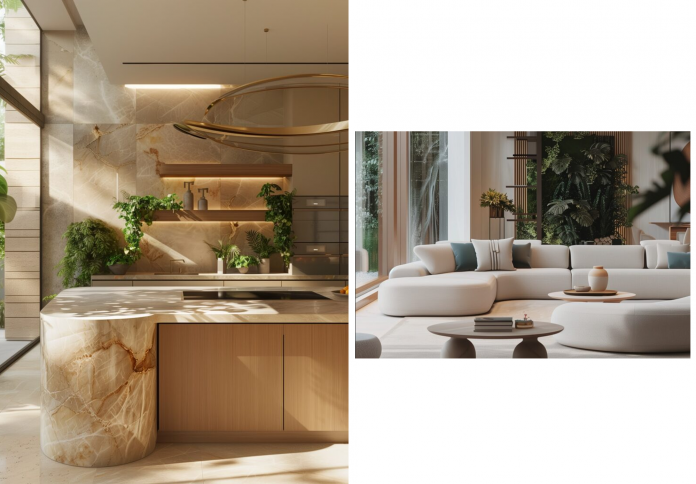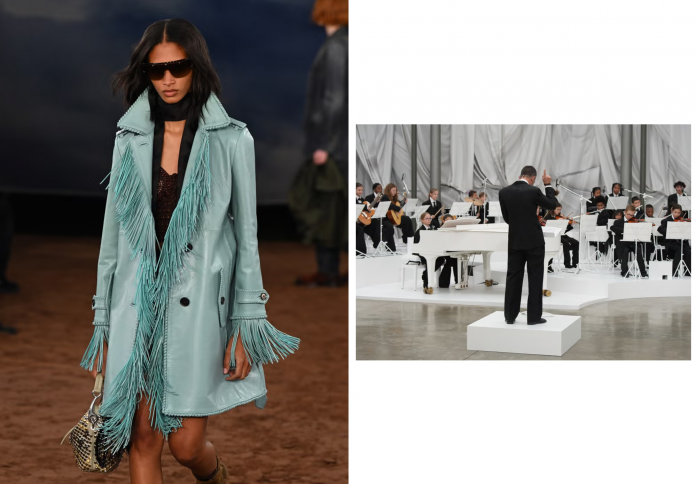In an era dominated by digital distractions and urban living, biophilic design is gaining momentum as more than a passing interior trend. It is a lifestyle philosophy that seeks to restore our connection with nature through intentional design. By integrating natural elements—light, texture, plants, and form—biophilic interiors offer a soothing counterbalance to modern stress, encouraging wellness, mindfulness, and emotional equilibrium within the walls of our homes.
Rediscovering our natural instincts
At its core, biophilic design isn’t just about beautifying a space with greenery or wooden furniture. It is about rekindling a primal connection to the natural world that our modern lives have largely suppressed. In the noise of technology and urban concrete, biophilic interiors provide a quiet but powerful form of resistance—a return to simplicity, serenity, and natural rhythm.
Scientific studies increasingly show that environments infused with biophilic elements—like dappled sunlight, organic materials, and sounds of water—help reduce stress and boost focus. These cues align with what our neurological systems recognize as safe and nurturing. Biophilic design doesn’t shout with grand gestures; it works quietly in the background, making our homes feel intuitively “right.” The result? Spaces that feel not only more alive but also more supportive of our mental and physical wellbeing.
The roots of biophilia

While the term “biophilia” was coined by American biologist Edward O. Wilson in the 1980s to describe humans’ innate affinity for life and natural systems, its essence is timeless. Ancient civilizations inherently designed with nature in mind. Japanese Zen gardens encouraged reflection, Roman courtyards brimmed with plants and fountains, and indigenous homes used natural, local materials that blended seamlessly with their surroundings.
Today, biophilic design brings that wisdom into modern context. It invites us to view our homes not just as shelters, but as living systems—spaces that support emotional health, environmental responsibility, and deepened awareness. Whether it’s a moss wall in a city apartment or a handmade clay planter by a sunny window, biophilic design is less about aesthetics and more about intention. Every natural element is chosen to nourish life, promote harmony, and cultivate presence.
The psychology of biophilic interiors

Modern neuroscience supports what ancient builders instinctively knew: nature heals. Homes designed with biophilic principles can significantly enhance our emotional health. Exposure to daylight, for example, regulates our circadian rhythms, improving sleep, mood, and energy levels. Morning sunlight boosts serotonin and helps us wake up gently, while warm-toned lighting in the evening prepares our minds for rest.
Visual access to nature—like a window view of trees or a rooftop garden—can reduce anxiety, increase creativity, and enhance cognitive performance, especially in today’s remote-working environments. The textures we interact with matter too. Touching warm wood, rough stone, or woven textiles stimulates our sensory memory, grounding us in the present and lowering cortisol levels.
Even small additions like indoor plants bring big benefits. A single potted fern or a vase of herbs can reduce blood pressure and elevate mood. Hospitals that integrate natural views or live greenery see quicker patient recovery times. These aren’t decorative flourishes—they are mental wellness strategies rooted in science.
Simple ways to bring biophilia home

Contrary to popular belief, biophilic design doesn’t require a full home makeover. Instead, it begins with mindful, sensory-based decisions. Ask yourself: “How does my home currently interact with nature?” Then, explore ways to deepen that connection.
Natural light and materials: Maximizing daylight is one of the simplest and most impactful strategies. Place workspaces or reading chairs near windows, use sheer curtains, and paint walls in light-reflecting hues. Let your space breathe with openness and air. Natural materials like reclaimed wood, jute rugs, linen textiles, and stone countertops invite not just visual appeal, but tactile comfort. They age beautifully, acquiring textures and imperfections that tell stories—much like the Japanese philosophy of wabi-sabi.
Plants and living walls: From towering fiddle-leaf figs to trailing pothos vines, houseplants offer not just aesthetic beauty but genuine life force. Cluster different species to create visual depth or line herbs along kitchen windows for function and fragrance. Living walls—vertical arrangements of greenery—can turn even small apartments into green oases, ideal for bathrooms, entryways, or home offices.
Use organic containers—woven baskets, clay pots, bamboo stands—to further reinforce your connection to natural forms. The goal is to create environments that feel alive, interactive, and ever-evolving.
Where trends meet intention

Biophilic design continues to influence broader aesthetic movements, especially minimalism and sustainability. But rather than stripping spaces bare, biophilic minimalism encourages curation with soul. Picture a sunlit room with whitewashed walls, a hand-carved bench, and one flourishing monstera—each item intentional, each moment uncluttered.
It’s a form of minimalism that favors craftsmanship over mass production, and quality over quantity. By removing excess and highlighting nature, our homes become sanctuaries of slowness and clarity—a needed contrast to modern life’s speed and noise.
At the same time, smart and sustainable solutions are aligning technology with biophilia. Automatic blinds optimize natural light, while color-adjusting LED bulbs simulate sunlight throughout the day. Smart irrigation systems make plant care seamless, and renewable materials like cork flooring or recycled glass tiles help reduce environmental impact. In this way, the biophilic home becomes both a refuge and a responsible ecosystem.
A lifestyle grounded in nature
Biophilic design is more than a fleeting interior trend—it is a return to human-centered living. It invites us to create spaces that not only serve function or style but also nurture our health, creativity, and emotional resilience. In an age when urbanization and screen time often disconnect us from the natural world, bringing nature into our homes is a powerful act of re-alignment.
This design philosophy doesn’t demand perfection—it encourages presence. From a sunbeam hitting a wooden floor to the scent of basil in the kitchen, the biophilic home engages our senses in gentle, healing ways. It’s about living with intention, designing with care, and embracing the quiet wisdom of the earth. In doing so, we don’t just build better homes—we build better lives.










